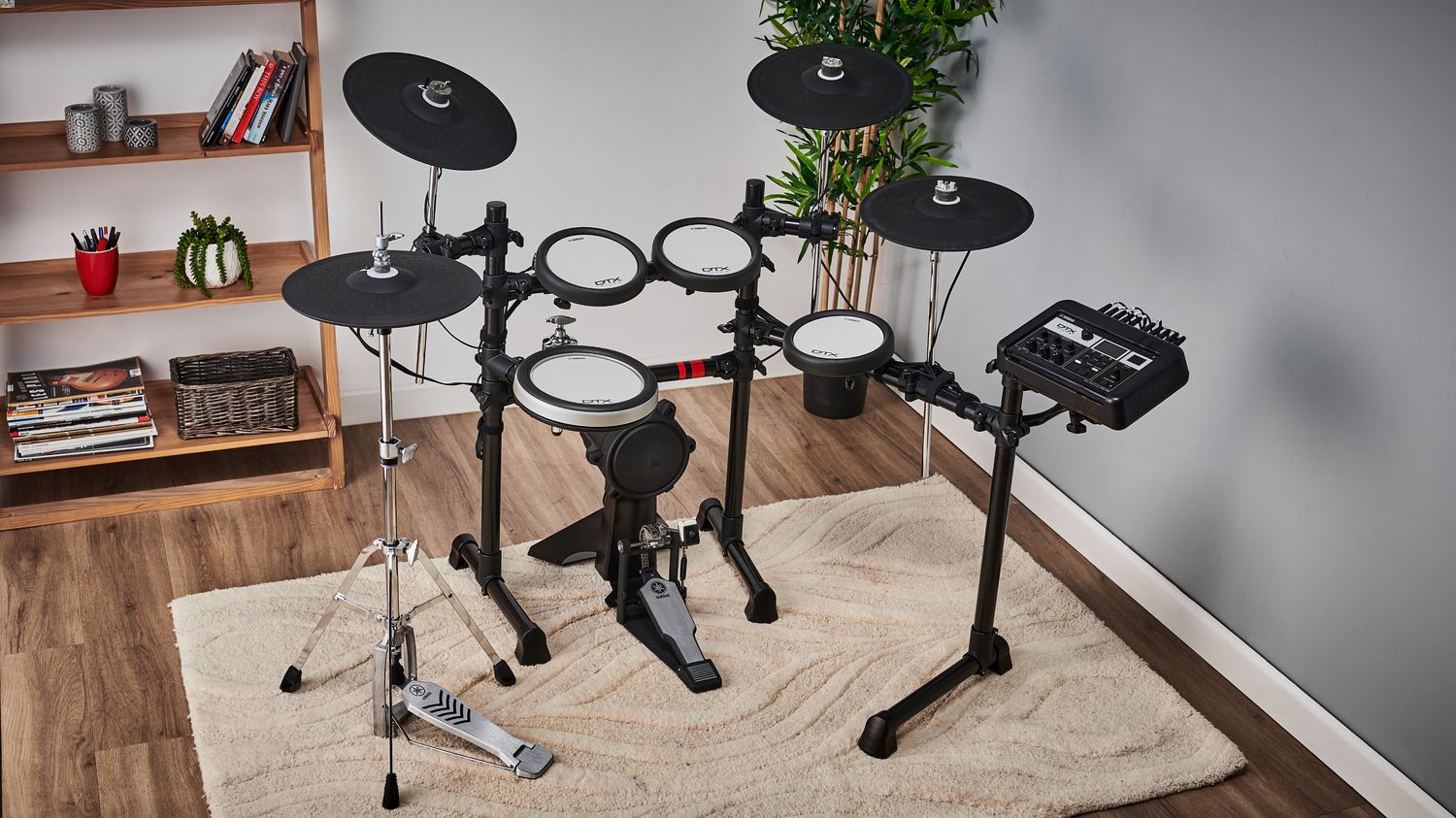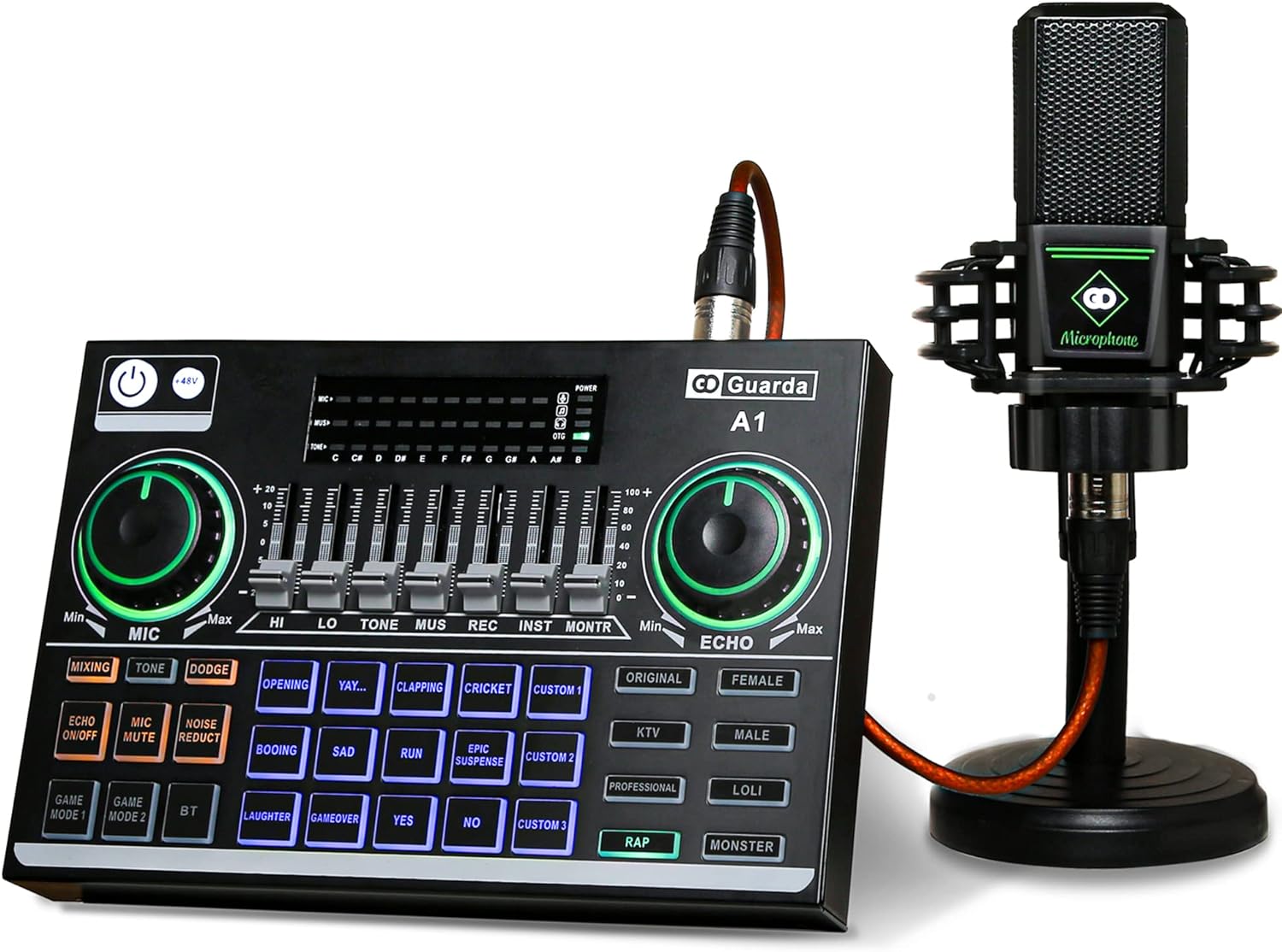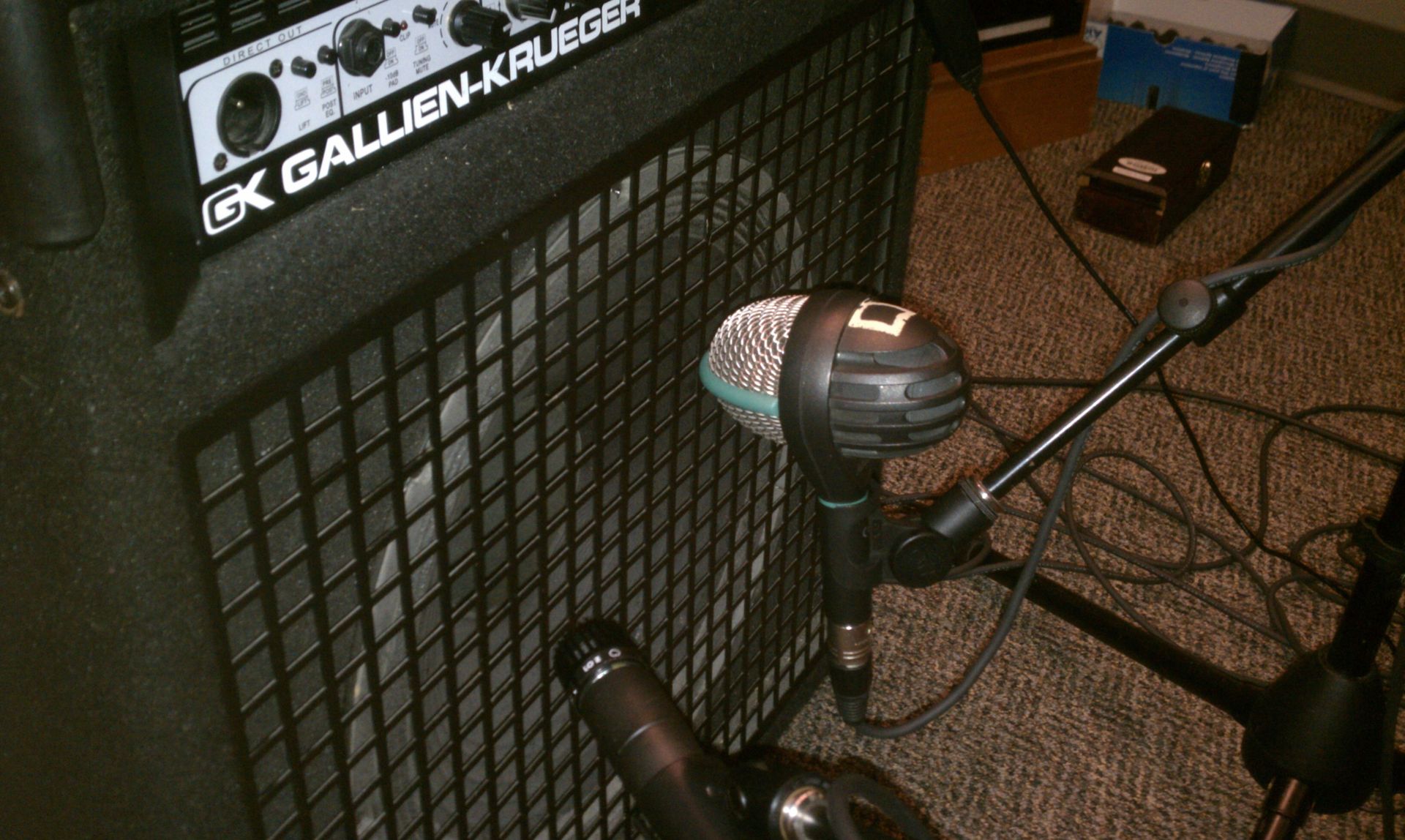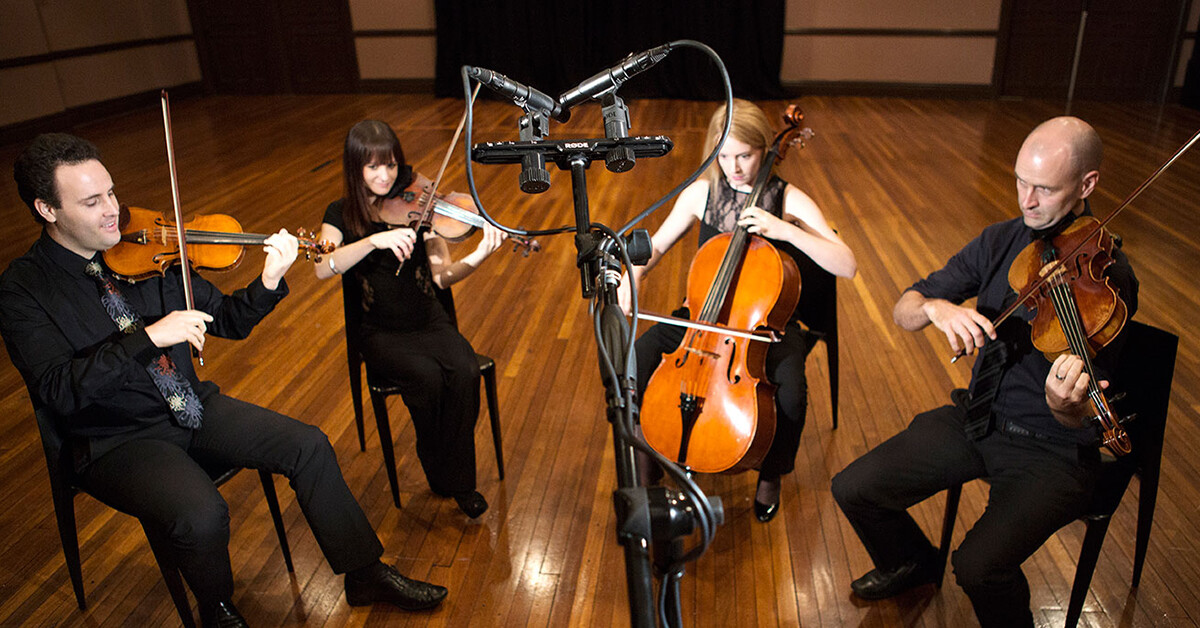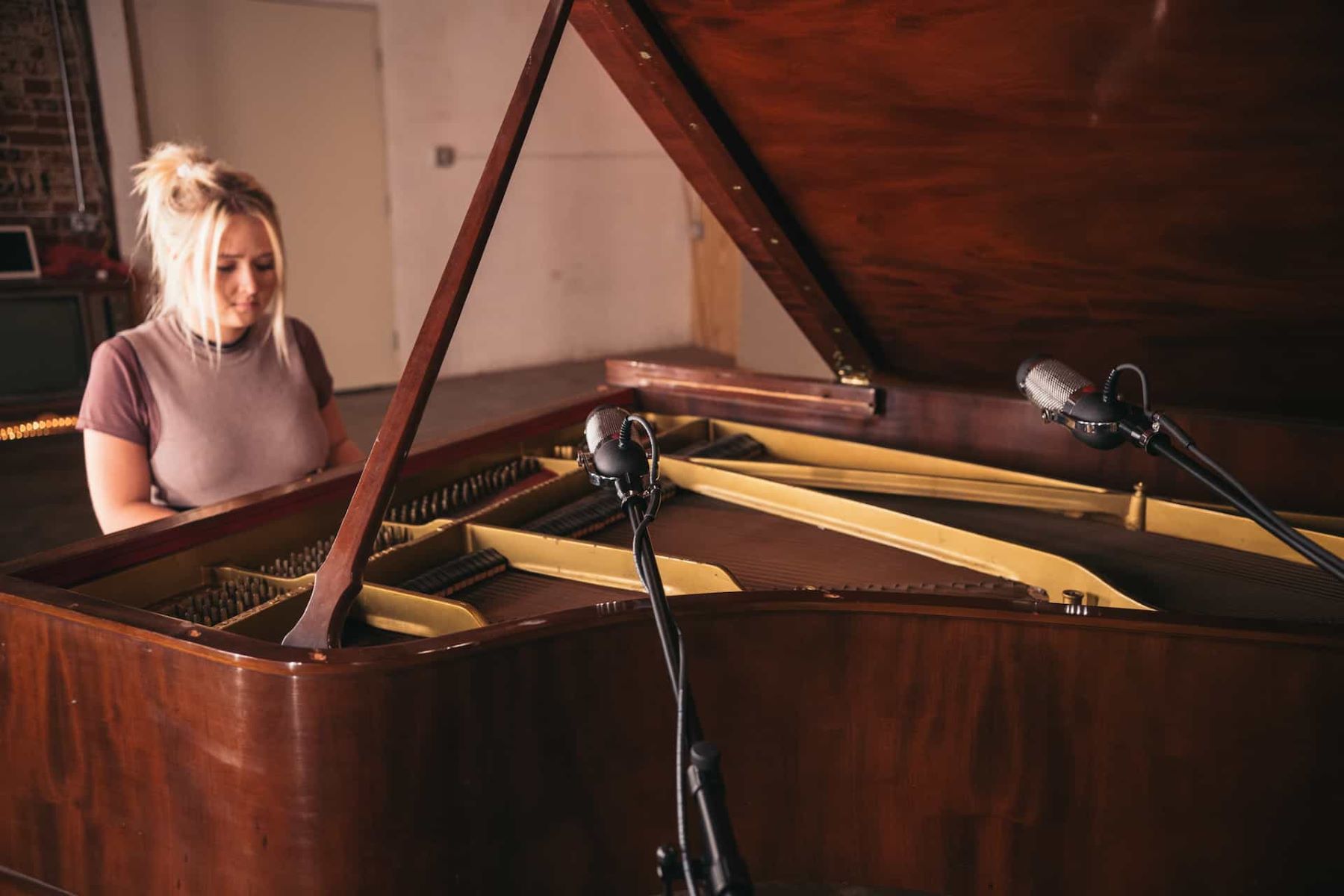Home>Instruments>Drums>How To Record Drums With Two Mics


Drums
How To Record Drums With Two Mics
Published: February 7, 2024
Learn how to capture the perfect drum sound using just two microphones. Our expert tips will help you achieve professional results for your drum recordings. Discover the best techniques for recording drums.
(Many of the links in this article redirect to a specific reviewed product. Your purchase of these products through affiliate links helps to generate commission for AudioLover.com, at no extra cost. Learn more)
Table of Contents
Introduction
When it comes to capturing the thunderous energy and intricate rhythms of a drum kit, the recording process plays a pivotal role. While multi-microphone setups are commonly used in professional drum recordings, the concept of using just two microphones to capture an entire drum kit may seem unconventional at first. However, with the right techniques and equipment, two-mic drum recording can yield impressive results, offering a raw and authentic sound that captures the essence of the drummer's performance.
In this comprehensive guide, we will delve into the art of recording drums with just two microphones. We'll explore the nuances of this minimalist approach, from understanding the principles behind it to selecting the appropriate microphones, setting them up, and positioning them effectively. Whether you're a budding home studio enthusiast or a seasoned recording engineer looking to experiment with new techniques, mastering the art of two-mic drum recording can open up a world of creative possibilities.
Throughout this guide, we'll provide practical insights and tips to help you achieve professional-quality drum recordings with minimal equipment. By the end, you'll have a solid understanding of the fundamentals of two-mic drum recording and the knowledge to apply these techniques to your own recording projects. So, let's embark on this sonic journey and uncover the secrets of capturing the dynamic power of a drum kit with just two microphones.
Understanding Two-Mic Drum Recording
Two-mic drum recording, also known as minimalist drum miking, involves using only two microphones to capture the entire drum kit. This approach is rooted in the concept of capturing the natural blend and balance of sound produced by the drums, rather than isolating each drum and cymbal with multiple microphones. By utilizing just two microphones strategically placed in the recording space, engineers can achieve a more organic and cohesive drum sound that reflects the true character of the instrument.
One of the key principles of two-mic drum recording is the emphasis on capturing the overall sound of the drum kit as a unified instrument, rather than focusing on individual components. This method requires careful consideration of microphone placement and a keen understanding of how different drum elements interact acoustically. By leveraging the sonic characteristics of the room and the drum kit’s natural resonance, two-mic drum recording can produce a rich and immersive sound that encapsulates the drummer’s performance in a compelling manner.
Minimalist drum miking is not merely a technical approach; it’s also a creative philosophy that encourages engineers to embrace the inherent dynamics and tonal nuances of the drum kit. By adopting this mindset, recording professionals can harness the expressive potential of the drums, allowing the instrument to breathe and resonate authentically within the recording environment. This approach often leads to a more vibrant and impactful drum sound that retains the energy and vitality of a live performance.
Furthermore, two-mic drum recording promotes a more streamlined and efficient workflow, making it an attractive option for home studio enthusiasts and recording engineers working in limited spaces. With fewer microphones to manage, the recording process becomes more manageable, and the emphasis shifts towards capturing the essence of the drumming performance with clarity and precision.
As we delve deeper into the intricacies of two-mic drum recording, we’ll explore the art of selecting the right microphones for the task and uncover the techniques for setting up and positioning them to capture the full spectrum of drum sounds effectively. Through this exploration, you’ll gain a deeper appreciation for the artistry and technical finesse involved in minimalist drum miking, equipping you with the knowledge to embark on your own sonic adventures in the realm of drum recording.
Choosing the Right Microphones
When embarking on a two-mic drum recording endeavor, selecting the appropriate microphones is crucial to capturing the nuances and dynamics of the drum kit effectively. Given the minimalist nature of this approach, the choice of microphones plays a significant role in shaping the overall sonic character of the recording. Here are some key considerations for choosing the right microphones for two-mic drum recording:
- Dynamic vs. Condenser Microphones: Dynamic microphones, known for their durability and ability to handle high sound pressure levels, are often favored for capturing the punch and impact of drums. Condenser microphones, on the other hand, offer greater sensitivity and capture the subtle details and transient response of the drums. When employing a two-mic setup, a combination of dynamic and condenser microphones can provide a balanced and comprehensive representation of the drum kit’s sound.
- Polar Patterns: Microphones with cardioid polar patterns are commonly used in two-mic drum recording due to their focused pickup pattern and reduced sensitivity to rear and side sounds. This characteristic helps minimize bleed from other instruments and ambient noise, allowing the microphones to capture the drums with greater isolation and clarity.
- Frequency Response: Considering the frequency response of the microphones is essential for capturing the full spectrum of drum sounds, from the deep lows of the kick drum to the shimmering highs of the cymbals. Microphones with a wide frequency response ensure that the entire tonal range of the drum kit is faithfully reproduced in the recording.
- Sonic Character: Each microphone imparts its own sonic coloration and tonal characteristics to the recorded sound. When selecting microphones for two-mic drum recording, it’s important to consider their sonic qualities and how they complement the desired tonal palette of the drum kit. Experimenting with different microphone combinations can reveal unique sonic textures and tonal blends, allowing for creative exploration in capturing the essence of the drums.
Ultimately, the choice of microphones for two-mic drum recording should align with the sonic vision and artistic direction of the recording project. By carefully evaluating the sonic attributes and technical specifications of various microphones, engineers and musicians can tailor their selection to achieve a cohesive and expressive drum sound that resonates with the musical context.
Setting Up the Microphones
Once the appropriate microphones have been selected for the two-mic drum recording setup, the next critical step is to configure and position them in a manner that optimally captures the nuances and dynamics of the drum kit. Proper microphone setup is essential for achieving a balanced and cohesive drum sound while minimizing phase issues and unwanted bleed. Here are key considerations for setting up the microphones:
- Placement for Balance: In a two-mic drum recording setup, achieving a balanced representation of the entire drum kit is paramount. One microphone is typically dedicated to capturing the kick drum and low-end frequencies, while the other microphone is strategically positioned to capture the rest of the kit, including the snare, toms, and cymbals. Placing the microphones in a manner that captures a cohesive blend of the drum kit’s components is essential for achieving a well-rounded and natural sound.
- Phase Coherence: Maintaining phase coherence between the two microphones is crucial to avoid phase cancellation and ensure that the recorded drum sound remains coherent and full-bodied. Careful attention should be given to the distance and alignment of the microphones relative to the drum kit, as well as the phase relationships between the individual drum elements. Adjusting the microphone positions and experimenting with phase alignment can help optimize the overall coherence and impact of the drum sound.
- Distance and Height: The distance and height at which the microphones are placed relative to the drum kit significantly influence the captured sound. Positioning the microphones at an optimal distance from the drums and adjusting their height to capture the desired balance of direct sound and room ambience is essential. Additionally, experimenting with microphone placement can reveal unique tonal characteristics and spatial dynamics, allowing for creative exploration in shaping the drum sound.
- Room Acoustics: Considering the acoustic properties of the recording space is vital when setting up microphones for two-mic drum recording. The room’s natural reverb and ambience contribute to the overall sonic character of the recorded drums. By strategically placing the microphones to leverage the room’s acoustics, engineers can capture a more expansive and immersive drum sound that reflects the spatial dimensions of the recording environment.
By meticulously addressing these considerations and leveraging the sonic potential of the chosen microphones, engineers and musicians can establish a cohesive and compelling two-mic drum recording setup that encapsulates the expressive power and dynamic range of the drum kit. The art of setting up microphones for minimalist drum miking involves a delicate balance of technical precision and creative intuition, ultimately shaping the sonic identity of the recorded drums in a profound and evocative manner.
Positioning the Microphones
Effective positioning of the microphones is paramount in two-mic drum recording, as it directly influences the tonal balance, spatial depth, and overall sonic coherence of the captured drum sound. By strategically placing the microphones to capture the distinct tonal characteristics and dynamic nuances of the drum kit, engineers can achieve a cohesive and immersive recording that resonates with clarity and impact. Here are key considerations for positioning the microphones in a two-mic drum recording setup:
- Kick Drum Microphone Placement: When positioning the microphone for capturing the kick drum, placing it just outside the resonant head of the kick drum can yield a balanced representation of the low-end punch and resonance. Adjusting the distance and angle of the microphone can influence the attack and sustain of the kick drum, allowing engineers to tailor the sound to suit the musical context.
- Overhead Microphone Placement: The overhead microphone, responsible for capturing the rest of the drum kit, is typically positioned above the kit at a height that allows for an expansive and balanced representation of the cymbals, toms, and snare. Experimenting with the distance and angle of the overhead microphone can reveal varying degrees of room ambience and spatial depth, contributing to the overall sense of dimension and presence in the drum recording.
- Stereo Image and Balance: Achieving a coherent stereo image and tonal balance between the two microphones is essential for creating a natural and immersive drum sound. Engineers often employ the “3-to-1 rule,” which dictates that the distance between the overhead microphone and the snare should be approximately three times the distance between the kick drum microphone and the kick drum beater. Adhering to this guideline helps maintain a balanced stereo image and minimizes phase issues between the microphones.
- Room Ambience Capture: Leveraging the positioning of the microphones to capture the natural ambience and reverberation of the recording space can enhance the spatial depth and immersive quality of the drum recording. By adjusting the placement of the microphones and experimenting with the room’s acoustics, engineers can infuse the drum sound with a sense of air and dimension, elevating the sonic impact of the recording.
Through meticulous experimentation and attentive listening, engineers can refine the positioning of the microphones to capture a cohesive and expressive representation of the drum kit, harnessing the instrument’s dynamic range and tonal complexity with finesse and artistry. The art of positioning microphones in two-mic drum recording involves a delicate balance of technical precision and creative intuition, ultimately shaping the sonic identity of the recorded drums in a profound and evocative manner.
Tips for Two-Mic Drum Recording
Embarking on a two-mic drum recording journey presents a unique set of challenges and creative opportunities. To achieve compelling and professional-quality drum recordings with this minimalist approach, consider the following tips and techniques:
- Experiment with Microphone Placement: Don’t hesitate to experiment with different microphone positions and angles to discover the optimal placement for capturing the nuances of the drum kit. Small adjustments can yield significant changes in the captured sound, allowing you to tailor the recording to suit the desired tonal characteristics and spatial dynamics.
- Focus on Performance and Balance: Encourage the drummer to deliver a balanced and dynamic performance, as the nuances of the playing style and technique will be prominently captured in a two-mic setup. Emphasize the importance of consistent playing dynamics and articulation to ensure a well-balanced and expressive drum recording.
- Utilize the Room’s Acoustics: Leverage the natural ambience and reverberation of the recording space to enhance the spatial depth and immersive quality of the drum recording. Carefully position the microphones to capture the room’s sonic characteristics, allowing the drums to breathe within the recording environment.
- Monitor and Adjust Phase Relationships: Continuously monitor the phase relationships between the kick drum and overhead microphones, ensuring that they complement each other and contribute to a cohesive and impactful drum sound. Fine-tune the microphone positions to minimize phase cancellation and optimize the overall phase coherence of the recording.
- Embrace the Minimalist Aesthetic: Embrace the inherent limitations and creative possibilities of a two-mic drum recording setup. Rather than viewing it as a constraint, approach it as an opportunity to capture the raw energy and organic essence of the drum kit, allowing the performance to shine through with clarity and authenticity.
- Listen and Iterate: Engage in attentive listening and iterative adjustments throughout the recording process. Continuously evaluate the captured sound, make subtle modifications to the microphone positions, and refine the recording technique to achieve the desired sonic vision for the drum kit.
By incorporating these tips into your two-mic drum recording endeavors, you can elevate the quality and expressiveness of the drum recordings, unlocking the full potential of this minimalist approach while honing your skills as a recording engineer or musician. Embrace the creative challenges and sonic possibilities that come with minimalist drum miking, and allow the drum kit to resonate with clarity, depth, and emotion in your recordings.
Conclusion
In the realm of drum recording, the minimalist approach of utilizing only two microphones to capture the full spectrum of the drum kit offers a unique and compelling avenue for engineers and musicians to explore. By embracing the principles of two-mic drum recording and mastering the art of selecting, setting up, and positioning the microphones, recording professionals can achieve captivating and authentic drum recordings that resonate with clarity, depth, and expressive power.
Throughout this comprehensive guide, we’ve delved into the intricacies of minimalist drum miking, shedding light on the nuanced techniques and considerations involved in this approach. From understanding the fundamental principles of two-mic drum recording to choosing the right microphones, setting them up, and positioning them strategically, we’ve uncovered the essential elements that contribute to the success of this minimalist technique.
Furthermore, we’ve explored valuable tips and insights for navigating the challenges and creative opportunities presented by two-mic drum recording. By experimenting with microphone placement, leveraging the room’s acoustics, and focusing on performance dynamics, engineers and musicians can harness the expressive potential of the drum kit and capture its essence with finesse and artistry.
As you embark on your own two-mic drum recording endeavors, remember that the minimalist approach is not merely a technical method; it’s a creative philosophy that encourages a deeper connection with the instrument and the musical performance. Embrace the inherent limitations as opportunities for artistic expression, and allow the drums to resonate authentically within the recording space, capturing the raw energy and emotive power of the performance.
Ultimately, two-mic drum recording embodies the art of sonic minimalism, inviting engineers and musicians to distill the essence of the drum kit into a focused and evocative sonic portrait. By honing your skills in minimalist drum miking and approaching the recording process with creativity and intention, you can unlock the full potential of this approach, yielding professional-quality drum recordings that captivate listeners and stand as a testament to the artistry of minimalist drum miking.
So, as you venture into the realm of two-mic drum recording, may this guide serve as a source of inspiration and knowledge, empowering you to embark on sonic journeys that capture the dynamic power and expressive beauty of the drum kit with clarity, depth, and emotion.


